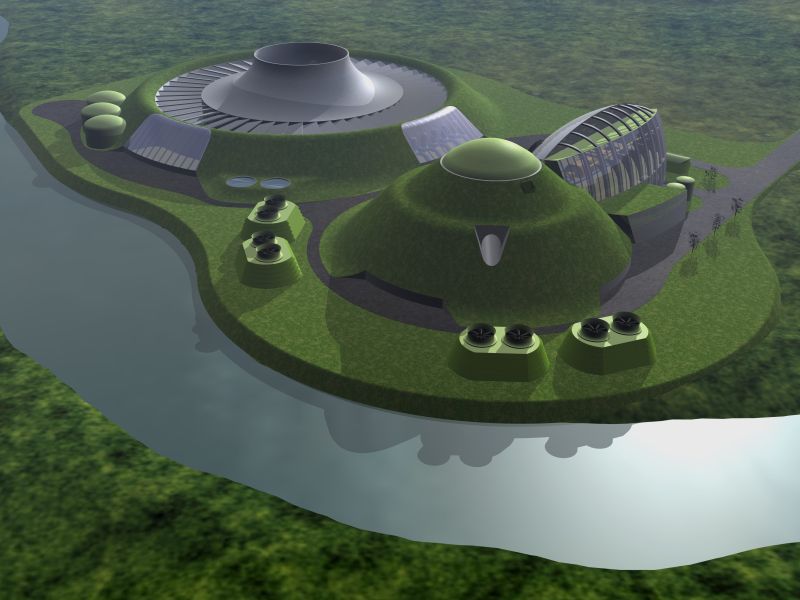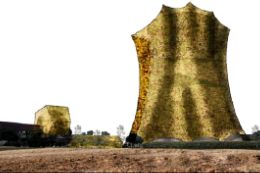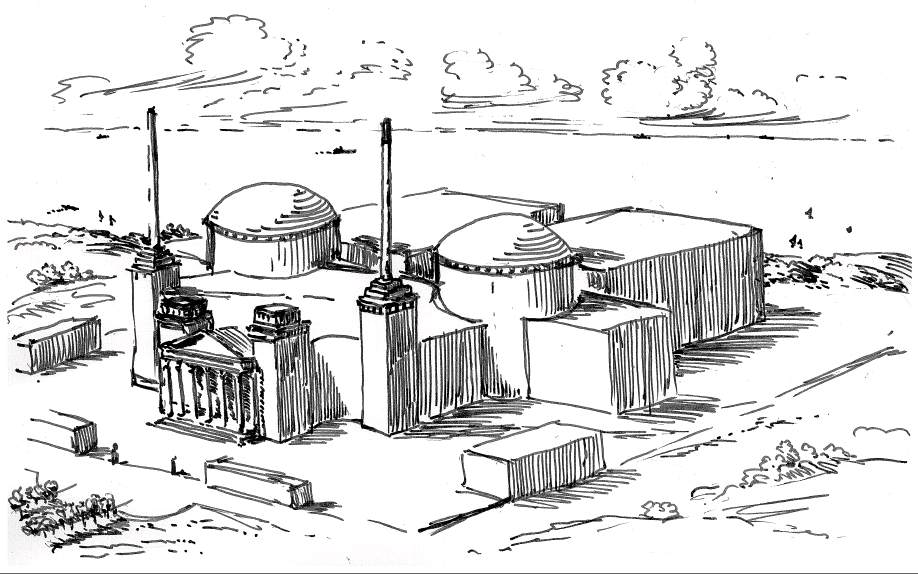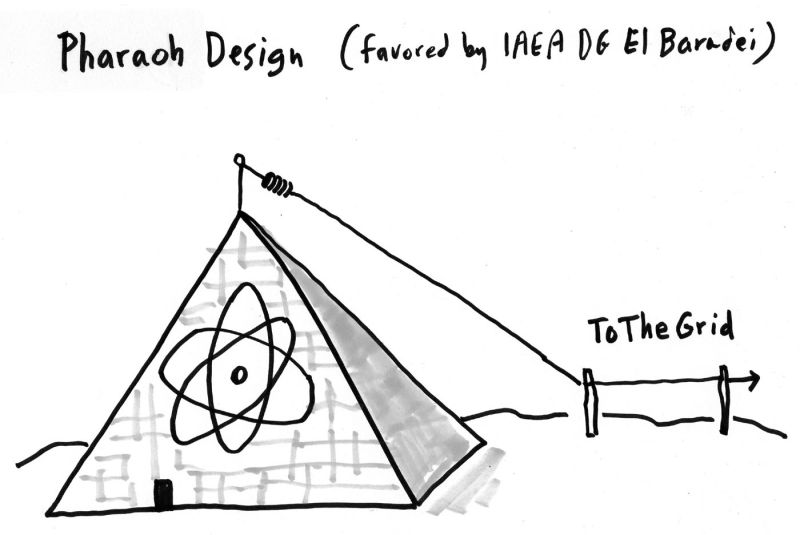Readers of World Nuclear News have revealed visions of a 21st century nuclear power plant, at ease in its environment. Some of the best are reproduced here.
Readers of World Nuclear News have revealed visions of a 21st century nuclear power plant, at ease in its environment.
Nuclear power plants should have their features blended into the environment as much as possible, while boasting strong, hi-tech design for the components that remain on view. Placing reactors underground was a popular suggestion, as was improving materials used for large highly visible structures like containment domes and cooling towers.
Many thanks to those readers that submitted their own ideas of the way nuclear power plants should be designed in the modern era. Some of the best are reproduced below.

|
 Aleš Buršič blends power plant Aleš Buršič blends power plant
features with the environment
through the use of earth
coverings. A hybrid cooling
tower is sunken to reduce its
visual impact and the 'green
barrier' also helps in
protection from external
hazards.
|
 |
 Spain-based architecture firm Spain-based architecture firm
with nuclear experience
IDOM-ACXT proposes a living
skin sustained by rainwater to
cover the main plant structures.
Left, making a natural feature
from an artifice, its appearance
would change through the
seasons.
|
 Another IDOM ACTX design Another IDOM ACTX design
sees an second skin erected
which would be opaque in
sunlight and translucent at
night.
Night-time lighting transforms
the power plant into a new
landmark.
|
 |
 Christian Raetzke's hand Christian Raetzke's hand
drawings show a modern
nuclear power plant benefiting
from eccentric and modern
superstructures that give a new
outline to familiar techonolgy.
Left, a traditional nuclear plant
gets retro treatment, including
a Greco-Roman facade.
|
Carlton Stoiber proposes specialised designs as approved by
senior nuclear industry figures. An undersea unit boasts a
reliable source of cooling water, while a pyramid superstructure
has the advantages of operating experience and seismic safety.
|
 
|













_18570.jpg)
_16159.jpg)
_18938.jpg)
_33584.jpg)





